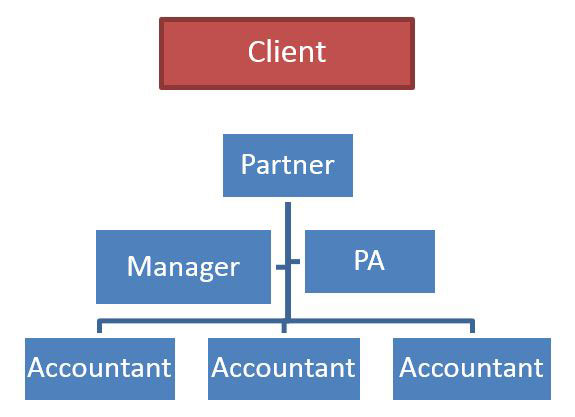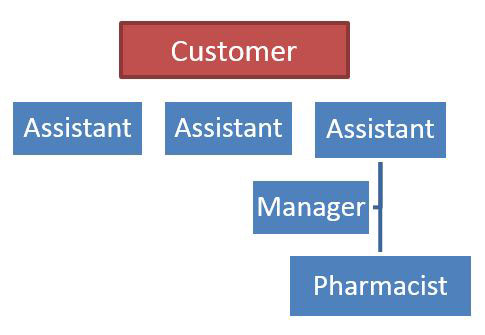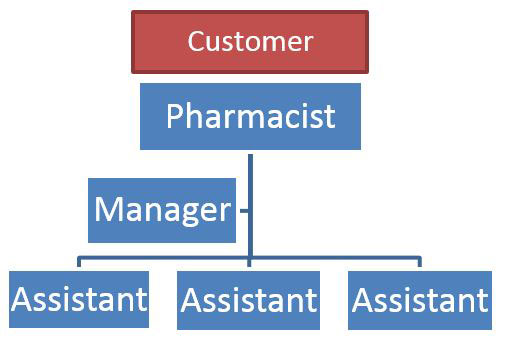When a client calls my office, I guess that seven times out of ten they are seeking to speak either to me or one of my senior managers. Perhaps they generally want to talk through an issue which may or may not be important, so they can call me on my direct line or mobile because I have supplied that to them just for this occasion. At the same time, I have introduced them to the team and sought to communicate a sense of ‘right person for the job’ so that for general assistance they might simply call my PA, Gina, who can assist them.
The model that professional advice firms such as legal and accounting firms operate is to generally put the adviser front and centre and have the team available for those tasks that are appropriate. If the adviser never talks to the clients, then the service level will fall to that of the knowledge and expertise of the team members who are taking the calls. That’s why it is important for the adviser to maintain client contact. Hopefully, the higher level of training and experience will mean that the adviser can pick up quickly issues that require specialist or immediate attention. If the adviser stays too much in the background, they will only attend to those matters that make their way through the crowd. The model that operates looks something like this:

Where does the pharmacy adviser get positioned?
At APP this year, I spoke of the need for change in the pharmacy model with the aim of achieving higher transaction yields through stronger customer engagement. What happens in the pharmacy? In most cases, the customer has to make her way through the pharmacy with the deftness of a fullback running a length-of-the-field try with the merest expectation of interacting with the key adviser in the premises, the pharmacist. Customers, whilst we are meant to be smarter these days, sometimes don’t know what we don’t know. It can sometimes be frustrating to be engaged by a pharmacy assistant who is not able to discern the major problem and nor is expected to in many cases. Our pharmacy assistants can be well-trained personnel but I am sure the pharmacist can provide some added value.
So if the customer is faced with this:

with the Pharmacist at the back of the pack, there may be solutions not being provided and sales being missed. Pharmacy owners should pay heed to the professional advice firm and consider presenting the pharmacist more on the floor and available to the customer.
Essentially the structure turns around and should be look more like this:

How do I change the approach?
In order to present the pharmacist more to the customer, this will require some re-engineering of processes and staff structure. Presently the business model is that the pharmacist is busy all day doing scripts and does not have the time. If staff cuts are made, the pharmacist is the last man or woman standing and gets even less time to spend with the customer.
Here are some questions to consider:
- are there enough dispense technicians on staff to allow the pharmacist more customer time?
- can automated dispensing or efficient shelving improve the amount of time available?
- what changes can be made to the script handling process to place the pharmacist at the front line and not at the back doing order fulfilment? And where will the other staff time be re-directed to?
- what other changes to the physical environment are needed?
- how will roles change in the front of store with the pharmacist potentially spending more time in customer engagement?
What are the benefits?
The increase in customer engagement by the pharmacist will be part of a bigger business strategy that sees more health solutions on offer and greater solution selling. At a more basic level, it should see greater sales of product that are appropriate for the customer’s needs. The pharmacist should be the best salesperson in the pharmacy. Not from the perspective of simply selling more but from the perspective of identifying more needs and providing more solutions. Once the needs are identified customers can always be passed onto the right team member to complete the sale.
Ultimately the benefits that flow should be:
- more engaged customers
- more customers
- a higher basket size
- higher gross profit per customer
It’s time to pull out the big guns and bring the pharmacist out from behind the counter. Pharmacist’s knowledge needs to be employed in providing advice to customers, not simply engaged in order fulfilment for scripts.




